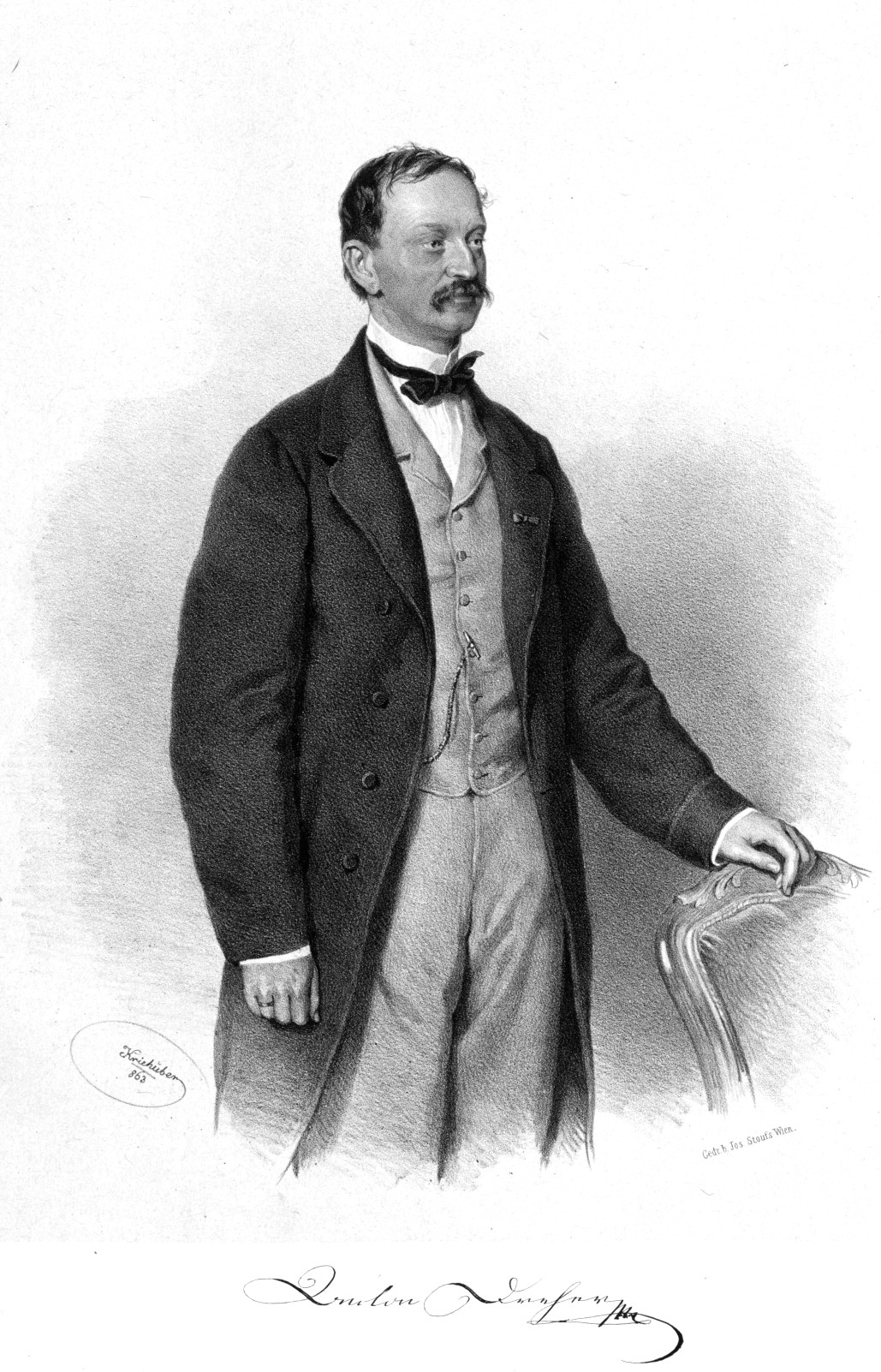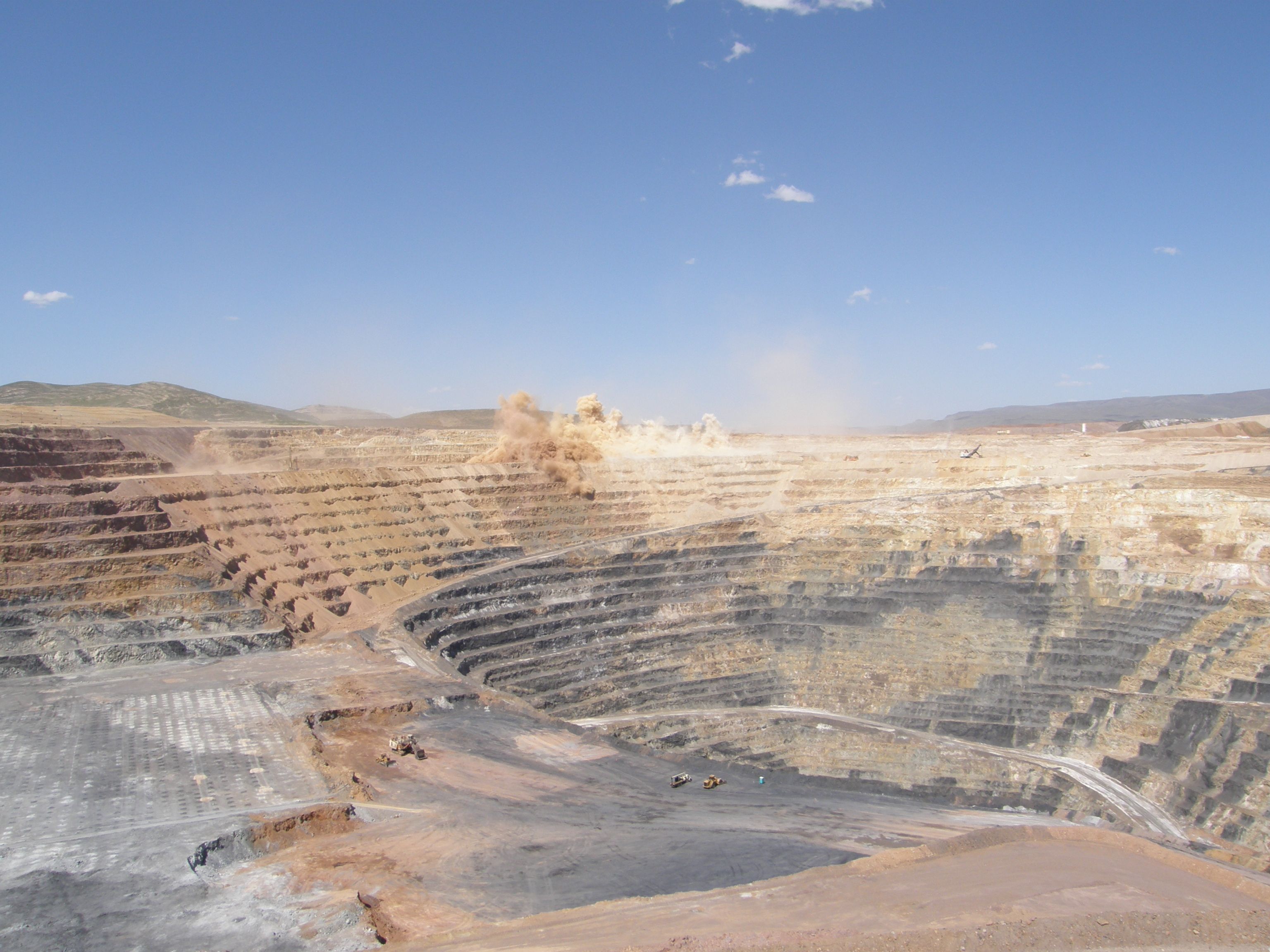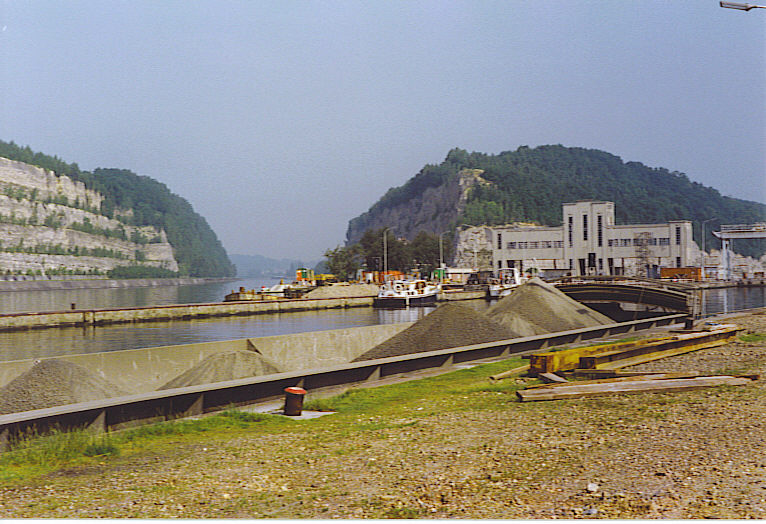|
Caves Of Maastricht
The Caves of Maastricht, also known as the caves of Mount Saint PeterBender, Marvin "A DUTCH TREAT" The New York Times Nov 8 1981 https://www.nytimes.com/1981/11/08/travel/a-dutch-treat.html or the Maastricht Underground, are a collection of limestone quarries in Maastricht, the Netherlands, the origins of which date back to the 13th century. They were originally dug to mine chalk. In total, a network of 20,000 tunnels were cut into the stone, of which 8,000 are still intact."The Caves of Maastricht" https://discoverlimburg.nl/caves-maastricht/ The caves were eventually no longer used for mining, as the value of lime dropped. Over some hundreds of years, art was drawn on the cave walls, providing an attraction to tourists who can tour some of the cave sections. During World War II, the cave complex was used to store many valuable paintings and armaments that could be used against the Germans, including a proposed force of 30 tanks that would sortie against the Germans that was ti ... [...More Info...] [...Related Items...] OR: [Wikipedia] [Google] [Baidu] |
Caves Of Europe
A cave or cavern is a natural void in the ground, specifically a space large enough for a human to enter. Caves often form by the weathering of rock and often extend deep underground. The word ''cave'' can refer to smaller openings such as sea caves, rock shelters, and grottos, that extend a relatively short distance into the rock and they are called ''exogene'' caves. Caves which extend further underground than the opening is wide are called ''endogene'' caves. Speleology is the science of exploration and study of all aspects of caves and the cave environment. Visiting or exploring caves for recreation may be called ''caving'', ''potholing'', or ''spelunking''. Formation types The formation and development of caves is known as ''speleogenesis''; it can occur over the course of millions of years. Caves can range widely in size, and are formed by various geological processes. These may involve a combination of chemical processes, erosion by water, tectonic forces, microorganism ... [...More Info...] [...Related Items...] OR: [Wikipedia] [Google] [Baidu] |
Beer Quarry Caves
Beer Quarry Caves is a man-made limestone underground complex located about a mile west of the village of Beer, Devon, and the main source in England for beer stone. The tunnels resulted from 2,000 years of quarrying beer stone, which was particularly favoured for cathedral and church features such as door and window surrounds because of its colour and workability for carving. Stone from the quarry was used in the construction of several of southern England's ancient cathedrals and a number of other important buildings as well as for many town and village churches, and for some buildings in the United States. Extraction was particularly intense during the Middle Ages, but continued until the 1920s. An adit to another set of workings can be seen from the South West Coast Path east of Branscombe, having been exposed by a landslip in the late 18th century. The quarry is part of the Jurassic Coast, and is a Site of Special Scientific Interest (SSSI). Beer stone Beer stone is a cre ... [...More Info...] [...Related Items...] OR: [Wikipedia] [Google] [Baidu] |
Odessa Catacombs
The Odesa Catacombs are a labyrinth-like network of tunnels (subterranean cavities) located under the city of Odesa and its outskirts in Ukraine, that are mostly (over 90%) the result of stone mining, particularly coquina.Bachynska, O. Odesa Catacombs (ОДЕСЬКІ КАТАКОМБИ)'. Encyclopedia of History of Ukraine. The system of Odesa Catacombs consists of a network of basements, bunkers, drainage tunnels and storm drains as well as natural caves. The Catacombs are on three levels and reach a depth of below sea level. It is one of the world's largest urban labyrinths, running up to . Parts were used as air-raid shelters during World War II. Part of the tunnels, only under the city, were turned into bomb shelters in the Cold War. Such bomb shelters supposed to be refuge for civilians in case of nuclear strike or gas attack. In the 19th century, most houses in Odesa were built of limestone that was mined nearby. According to urban legend, these mines were abandoned and l ... [...More Info...] [...Related Items...] OR: [Wikipedia] [Google] [Baidu] |
Mines Of Paris
The mines of Paris (french: carrières de Paris – "quarries of Paris") comprise a number of abandoned, subterranean mines under Paris, France, connected together by galleries. Three main networks exist; the largest, known as the ("large south network"), lies under the 5th, 6th, 14th and 15th arrondissements, a second under the 13th arrondissement, and a third under the 16th, though other minor networks are found under the 12th, 14th and 16th for instance. The commercial product was Lutetian limestone for use as a building material, as well as gypsum for use in "plaster of Paris". Exploring the mines is prohibited by the prefecture and penalised with large fines. Despite restrictions, Paris' former mines are frequently toured by urban explorers known popularly as cataphiles. A limited part of the network has been used as an underground ossuary, known as the catacombs of Paris, some of which can be toured legally. (The catacombs were temporarily closed between Septemb ... [...More Info...] [...Related Items...] OR: [Wikipedia] [Google] [Baidu] |
Kőbánya Cellar System
The Kőbánya cellar system or cellar system of Kőbánya (; in Hungarian: ''kőbányai pincerendszer'', "cellar system of Kőbánya", or ''kőbányai alagútrendszer'', "tunnel system of Kőbánya"), sometimes known to non-Hungarians simply as the Kőbánya Mine, or the Kobanya Mine, is an extensive network of subterranea, or underground spaces, in the 10th district of Budapest (Kőbánya), in Hungary. It is considered to be the largest cellar complex in the country. The complex as a whole started as an underground limestone quarry in a wine-growing area of present-day Kőbánya in the Middle Ages. Later wineries and beer breweries were established on the premises and they continued to use some of the underground spaces. During the Second World War, the dimensions of the complex enabled it to be used as a covert aircraft engine assembly plant and a civilian hideout. Since 2008, Kőbánya Asset Manager Jsc. organizes free guided tours annually (during Saint László Days), wh ... [...More Info...] [...Related Items...] OR: [Wikipedia] [Google] [Baidu] |
Mosasaur
Mosasaurs (from Latin ''Mosa'' meaning the 'Meuse', and Ancient Greek, Greek ' meaning 'lizard') comprise a group of extinct, large marine reptiles from the Late Cretaceous. Their first fossil remains were discovered in a limestone quarry at Maastricht on the Meuse in 1764. They belong to the order Squamata, which includes lizards and snakes. Mosasaurs probably evolved from an extinct group of aquatic lizards known as Aigialosauridae, aigialosaurs in the Late Cretaceous, Earliest Late Cretaceous with 42 described genera. During the last 20 million years of the Cretaceous period (Turonian–Maastrichtian ages), with the extinction of the ichthyosaurs and Pliosauridae, pliosaurs, mosasaurs became the dominant marine predators. They themselves became extinct as a result of the Cretaceous–Paleogene extinction event, K-Pg event at the end of the Cretaceous period, about 66 million years ago. Description Mosasaurs breathed air, were powerful swimmers, and were well-adapted to livi ... [...More Info...] [...Related Items...] OR: [Wikipedia] [Google] [Baidu] |
Open-cast Mine
Open-pit mining, also known as open-cast or open-cut mining and in larger contexts mega-mining, is a surface mining technique of extracting rock or minerals from the earth from an open-air pit, sometimes known as a borrow. This form of mining differs from extractive methods that require tunnelling into the earth, such as long wall mining. Open-pit mines are used when deposits of commercially useful ore or rocks are found near the surface. It is applied to ore or rocks found at the surface because the overburden is relatively thin or the material of interest is structurally unsuitable for tunnelling (as would be the case for cinder, sand, and gravel). In contrast, minerals that have been found underground but are difficult to retrieve due to hard rock, can be reached using a form of underground mining. To create an open-pit mine, the miners must determine the information of the ore that is underground. This is done through drilling of probe holes in the ground, then plotting eac ... [...More Info...] [...Related Items...] OR: [Wikipedia] [Google] [Baidu] |
Mount Saint Peter
Mount Saint Peter (French: ''Montagne Saint-Pierre''; Dutch: ''Sint-Pietersberg''), also referred to as Caestert Plateau, is the northern part of a plateau running north to south between the valleys of the river Geer to the west, and the Meuse to the east. The plateau runs from Maastricht in the Netherlands, through Riemst in Belgian Limburg almost to the city of Liège in Belgium, thus defining the topography of this border area between Flanders, Wallonia and the Netherlands. The name of the hill, as well as the nearby village and church of Sint Pieter and the fortress of Sint Pieter, refers to Saint Peter, one of the Twelve Apostles. Principal characteristics The plateau, of which Mount Saint Peter is part, is bounded on the east by the Meuse river (Dutch: ''Maas'') and on the west by the Geer (''Jeker''). Since the 1930s, the Albert Canal divides the hill in two sections. Near the small Liège Province village of Lanaye (Dutch: ''Ternaaien''), the canal cuts through the ridge ... [...More Info...] [...Related Items...] OR: [Wikipedia] [Google] [Baidu] |
Rembrandt
Rembrandt Harmenszoon van Rijn (, ; 15 July 1606 – 4 October 1669), usually simply known as Rembrandt, was a Dutch Golden Age painter, printmaker and draughtsman. An innovative and prolific master in three media, he is generally considered one of the greatest visual artists in the history of art and the most important in Dutch art history.Gombrich, p. 420. Unlike most Dutch masters of the 17th century, Rembrandt's works depict a wide range of style and subject matter, from portraits and self-portraits to landscapes, genre scenes, allegorical and historical scenes, biblical and mythological themes and animal studies. His contributions to art came in a period of great wealth and cultural achievement that historians call the Dutch Golden Age, when Dutch art (especially Dutch painting), whilst antithetical to the Baroque style that dominated Europe, was prolific and innovative. This era gave rise to important new genres. Like many artists of the Dutch Golden Ag ... [...More Info...] [...Related Items...] OR: [Wikipedia] [Google] [Baidu] |
The Night Watch
''Militia Company of District II under the Command of Captain Frans Banninck Cocq'', also known as ''The Shooting Company of Frans Banning Cocq and Willem van Ruytenburch'', but commonly referred to as ''The Night Watch'' ( nl, De Nachtwacht), is a 1642 painting by Rembrandt van Rijn. It is in the collection of the Amsterdam Museum but is prominently displayed in the Rijksmuseum as the best-known painting in its collection. ''The Night Watch'' is one of the most famous Dutch Golden Age paintings. The painting is famous for three things: its colossal size (), the dramatic use of light and shadow ( tenebrism) and the perception of motion in what would have traditionally been a static military group portrait. The painting was completed in 1642, at the peak of the Dutch Golden Age. It depicts the eponymous company moving out, led by Captain Frans Banninck Cocq (dressed in black, with a red sash) and his lieutenant, Willem van Ruytenburch (dressed in yellow, with a white sash ... [...More Info...] [...Related Items...] OR: [Wikipedia] [Google] [Baidu] |









